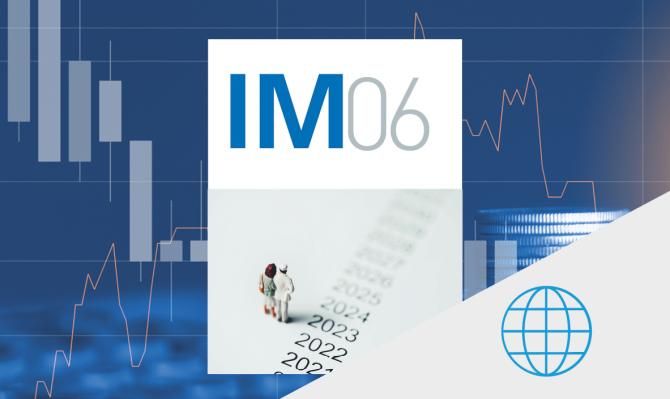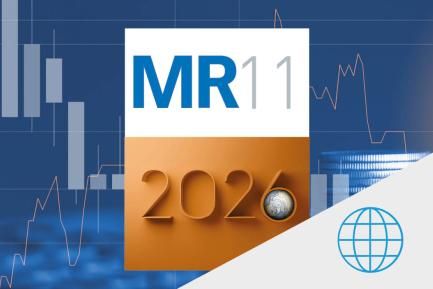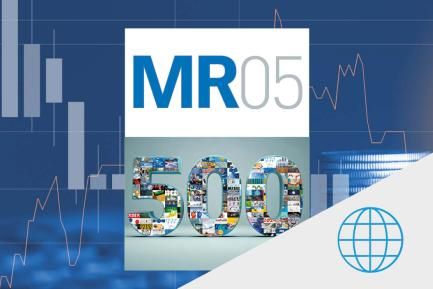
Clearer skies in the international economy, albeit with risks of storms
After a few months in which the winds have been less unfavourable than expected, the growth forecasts for this year are looking somewhat brighter
After a few months in which the winds have been less unfavourable than expected, the growth forecasts for this year are looking somewhat brighter
With the horizon loaded with risks, the clouds of the war in Ukraine led us to expect a scenario of stagflation at the beginning of the year, with a slowdown in the world economy from 3.1% in 2022 to 2.7% in 2023. Such a scenario was consistent with a Chinese economy weighed down by the restrictions, an energy crisis in Europe without precedent in recent times, gas prices far above their historical levels, a process of rapid monetary tightening in most of the major economies (necessary to contain the inflation crisis) and an environment of high geopolitical tensions. Although many of these underlying factors have not changed, China’s reopening, the improvement in the energy outlook and a less weak Q1 than expected lead us to revise our macroeconomic scenario for 2023, with global growth now expected to be 2.8% as a result of upward revisions in the major economies. Specifically, we revised our forecast for GDP growth in the euro area to 0.9% (vs. 0.5% previously), in the US to 1.2% (vs. 0.9% previously) and in China to 5.7% (vs. 5.2% previously).

Inflation offers mixed signs of cooling
As set out in the Focus «New economic scenario: a change of outlook for international economies and markets?» in this same report, the balance between the downward drag of energy prices and the inertia of core component prices has led us to revise our inflation forecasts for the major international economies slightly upwards. After all, despite the moderation observed in recent months, the latest data still show significant underlying tensions. In particular, core inflation is still above 5% in both the US and the euro area, and the indicator of negotiated wage rates for the euro area (an indicator published by the ECB) continues to show an acceleration relative to prior quarters, with a year-on-year increase of 4.3% in Q1 2023 (vs. 3.1% in Q4 2022 and a historical average of around 2%). The strength of the labour market will thus continue to provide a floor for the rate at which inflation can decline. In the US, the unemployment rate has stood at around 3.5% in recent months, a level not sustained since 1969. Finally, even though tensions in food prices have begun to moderate, prices remain well above their pre-war levels, and there continues to be a state of drought in many major producing regions.

Mists and crosswinds in European economic activity
In the euro area, the situation is rather varied. On the one hand, the downward revision of Germany’s growth for Q1 2023 from 0.0% to –0.3% (vs. –0.5% in Q4 2022) shows that the largest economy in the European bloc is in a technical recession, after registering two consecutive quarters of quarter-on-quarter declines in GDP. Spain, France and Italy remain the stars of the show, with positive growth in Q1 and an acceleration in the growth rate versus the previous quarter. There are also significant differences between sectors. Services remain the driver of the recent recovery, still spurred on by a post-pandemic boom which is beginning to show timid signs of moderation, while industry is showing persistent signs of weakness. This duality is well reflected in the business confidence data: the services PMIs are above 55 points for the third consecutive month, while those of industry have registered 11 months below 50 points and 4 consecutive months of declines. The German Ifo index also disappointed this month, falling by more than expected (to 91.7 points) and with 22 months in contractionary territory (below 100 points). In this context, economic activity is expected to remain luggish in the coming months.

With the impasse in the US Congress seemingly resolved, watch out for side effects
In the US, although the market turbulence has dissipated for now, the risk of storms remains ever-present due to the side effects of the impasse regarding the debt ceiling, as well as due to the tightening of financial conditions. Since January, the US Treasury has been forced to take exceptional measures to ensure the normal functioning of the federal government (a historically rare event, although in the last 13 years these episodes have been repeated over 10 times). With these measures on the verge of expiring, an agreement was reached in the negotiations between Democrats and Republicans to raise the debt ceiling, alleviating fears of a partial government shutdown (to ensure the repayment of the debt) or a default which, although highly unlikely, would have led to a cascade of events in the financial markets and would have had potentially severe global consequences. However, following the increase in the debt ceiling under an agreement that should last two years, the heightened risk perceived by investors is still palpable in the financial markets (see the Financial Markets section) and the spending cuts negotiated between Republicans and Democrats are expected to deduct as much as 0.2 pps from US growth this year.


In China, the boost provided by the reopening process has run out of steam
The economic activity data for April has fallen short of expectations. Although both industrial production (5.6%) and retail sales (18.4%) have advanced at a considerable rate in year-on-year terms, this growth is distorted by the base effects related to the closure of the Chinese economy a year ago. Looking at the breakdown by component, the strength of the services sector and the advance of public investment have stood out in recent months, in contrast with the weakness of the manufacturing sector and residential investment. In the manufacturing sector, of particular note is the year-on-year decline in the industrial production of electronic products, including semiconductors. Taking into account the export restrictions announced over the last few months by the world’s major producers of these components, such as the US and Japan, this factor is expected to continue to undermine the outlook for industry in the short term, while also acting as a strong headwind for the long-term growth outlook.



